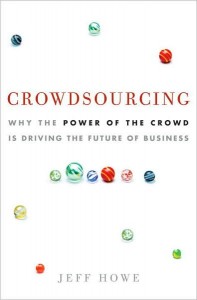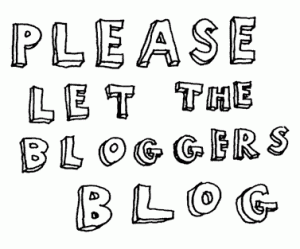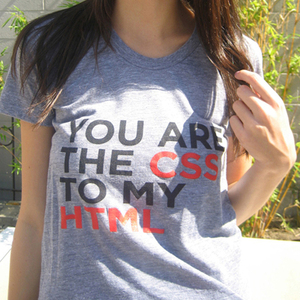Briggs Chapter 4
Microblogging: Write Small, Think Big
News in 140-characters
The twitter chapter! Basically I’m going to break it down for you in a few basic points.
Real-time uses of Twitter:
- Evacuations
- Tradgedy
- Trial Coverage
- Broadcast news
Start using Twitter, Tweet!
- Establish your goal
- Have a topic
- Make a network
- Perhaps build personal brand
Twitter lingo-
DM: Direct message
@: For a reply, it precedes a Twitter ID in a reply. Are you reading this? Tweet me a reply! @Lyndseymercier
Tweet: send a message on Twitter
RT: Retweet, copying someone tweet, and posting it so your followers can see it.
Hashtag: Common label for a twwet that should be tied together with others’ tweets, preceeded by a # symbol.
What is there to do on Twitter?
- Post
- Read
- Reply
- Direct message
Filed under "Journalism Next" | Comment (0)
Briggs Chapter 3
Have you ever heard the phrase, two heads are better than one?
Briggs moved on in “Journalism Next” to crowdsourcing. What is crowdsourcing? “It is a relatively new term, coined by Jeff Howe in a 2006 article for Wired News. Think of crowdsourcing like outsourcing, the term it spun off from. Crowdsourcing harnesses the sustained poer of community to improve a service or information base” –Mark Briggs.
Incase you are curious, here is the front cover of Howe’s book:
Popular crowdsourcing sites:
The concept is important because sites can receive thousands of contributions. Blogs can turn into news stations and the coverage these sites get would never have happened without crowdsourcing.
Mark Briggs went on to describe beatblogging. I found a really great site, ironically called BeatBlogging.Org, with an article written by Jay Rosen that does an outstanding job defining and elaborating on what a beatblog is, what they look for, and how people can help.
Links are also a huge way to help power the web. They build readership and viewers usually come back for more. Take Google for example!
Briggs ended the chapter off by lying explaining that newspapers still tap the power of a crowd and that print is still unbelievably a powerful tool. Maybe next edition of Journalism Next, Briggs will update Chapter 3.
Filed under "Journalism Next" | Comment (0)Briggs Chapter 2
Advanced Blogging
The rules are different with blogs. Blogging reporters play off other information they find online, even linking stories and blogs that might have been thought of as competition just a few years ago.
Three characteristics define a blog:
- Frequently updated (recently updated stuff on top)
- Entries are called, “posts” and each have a headline and body. Entries include links, photos, and graphics
- Contains a link to allow readers to comment
Question: When and why did blogs change web publishing according to Briggs?
Answer: After the terrorist attacks of Sept. 11, 2001, blogs become a way for people to share their responses and experiences during that day, along with thoughts on where the country was headed.
Blogger Language:
Post: Entry of a blog
Permalink: Link available of each post that provides direct access to that post
Trackback: Mechanism for communication between blogs, so bloggers know who is linking to their material
Blogroll: Collection of links found on sidebar of blog
Vblog: Blog that features video commentary
Moblog: Blogging from a mobile device
Top 10 blogs according to Briggs?
- The Huffington Post
- TechCrunch
- Mashable
- Gizmodo
- Engadget
- The Official Google Blog
- Boing Boing
- Lifehacker
- Ars Technica
- TMZ.com
Source: Technorati. October 2009.
Where is lyndseymercier.onmason.com on that list Briggs? Very complete list.
Filed under "Journalism Next" | Comment (0)Briggs Chapter 1
We’re All Web Workers Now
…Says Mark Briggs.
This thirty some page chapter dove straight in describing the basics of how the internet works and the technical contruction of web pages .
Briggs had a graph like picture to help teach about Bits and Bytes. A comparable image I found was on a Discovery Company’s blog: HowStuffWorks. Check out Marshall Brain’s graph! The table shows the binary multipliers.
“Basic knowledge of HTML, CSS, and XML will enable you to see more clearly the opportunities for your journalism in the digital world” – Mark Briggs.
The text gave a basic tutorial on how the internet works and the difference between the Internet and the World Wide Web. Then Briggs went into detail about Syndicated content with RSS and how to set up an RSS reader and subscribe to feeds. FTP (file transfer protocol) was described, along with how web pages work.
Briggs explained how to build an HTML page quickly, and thankfully explained what CSS (cascading style sheets) is. Once you have a basic understanding of CSS, which was over my head when I first started reading about it, it was easy to be able to add CSS to HTML. Finally, the chapter wrapped up all the definitions with a final section on XML (essential markup language).
BUY IT HERE! How geeky I love it!
Filed under "Journalism Next" | Comment (0)



